I got hooked after learning the hem stitch by hand from my grandma! I found myself stitching around every fabric edge I could get my hands on. It felt almost therapeutic until I had a lightbulb moment one day.
Wait… there isn’t just one way to do a hem stitch?
Curious, I started digging deeper, and sure enough. There are 12 types of hemming stitches by hand. And guess what? Each of them serves a different purpose.But a few types of hemming stitches are stitcher fan favorites, too. Some of the most common types of hem stitches by hand are,
But a few types of hemming stitches are stitcher fan favorites, too. Such as,
- Knotted Hemming Stitch
- Close Hemming Stitch
- Vertical Hemming Stitch
- Slip Hemming Stitch
It’s amazing how a simple technique can have so many variations! Which one is your go-to hemming stitch? Let’s see in the bellow conversation.
Key takeaways of types of hemming stitches by hand:
- There are 12 different types of hemming stitches
- Some stitches are stitcher favourites, like the Knotted, Close, Vertical, and Slip Hemming Stitch.
- The Slip Hemming Stitch is the best choice for a nearly invisible hem.
- If durability is a priority, the Knotted Hemming Stitch adds extra strength. This is also perfect for decorative hem stitch by hand.
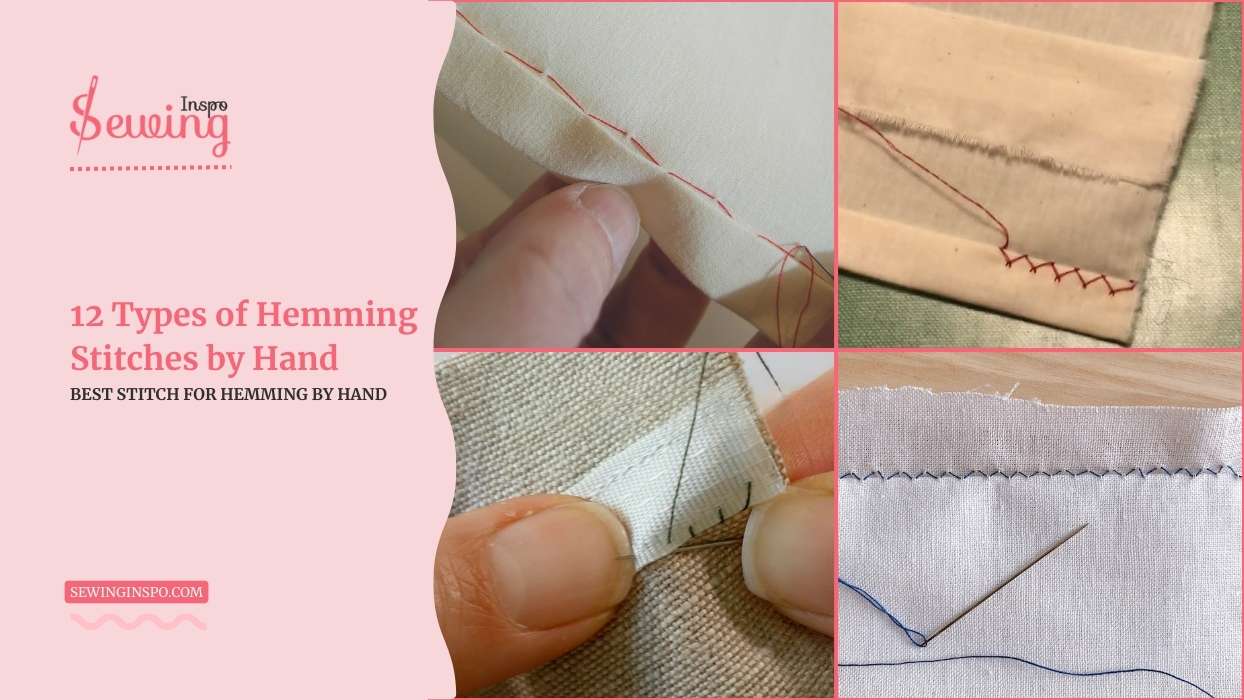
Table of Contents
12 Types Of Hemming Stitches By Hand With Pictures
So yes, there isn’t only 1 way to do hemstitch, just like there are other types of sewing stitches. There are around 12 types of hemming stitch by hand. For example,
- Knotted Hemming Stitch
- Close Hemming Stitch
- Vertical Hemming Stitch
- Slip Hemming Stitch
- Hand Rolled Hem Stitch
- Faced Hem Stitch
- Bound Hem Stitch
- Narrow Hem Stitch
- Felled Hemming Stitch
- Piped Hem Stitch
- Double Fold Hemstitch
- Cuffed Hemming Stitch
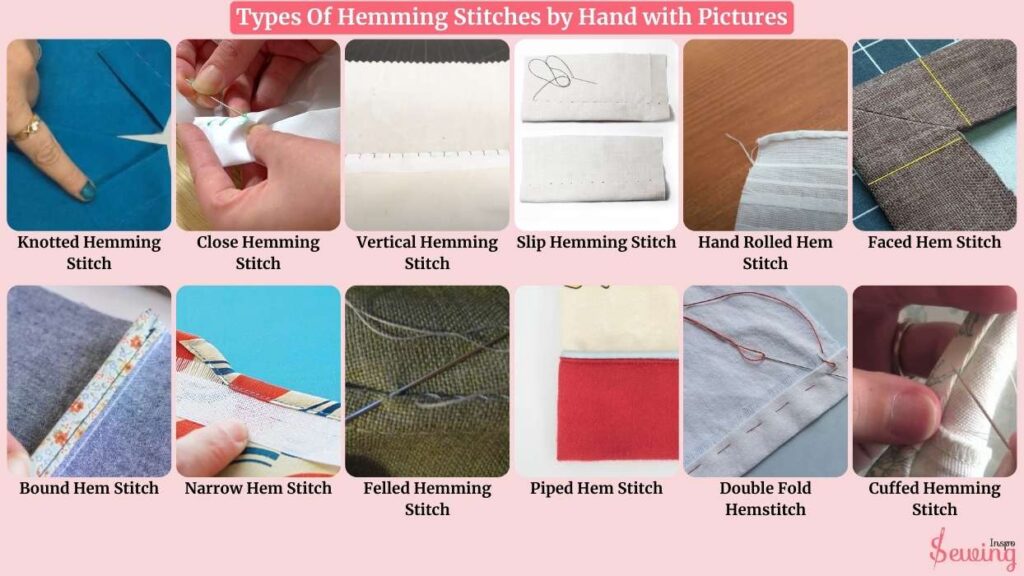
That’s all types of hem stitches by hand. Sounds interesting, right? Now, let’s get into detail. What are the different types of hem stitches?
Knotted Hemming Stitch Perfect Decorative Hem Stitch By Hand
The Knotted Hemming Stitch is like a regular hemming stitch but with a knot. Tiny knots are added at gaps instead of just stitching along the fabric edge. It makes the hem stronger and less likely to crack over time.
How does it look? Well, it’s totally different from the Hemming stitch picture.
The knotted hem looks neat and diagonal, with the knots blending subtly into the fabric when done carefully. This stitch is a favorite for garments that see a lot of wear. Think skirts, trousers, or even household linens.
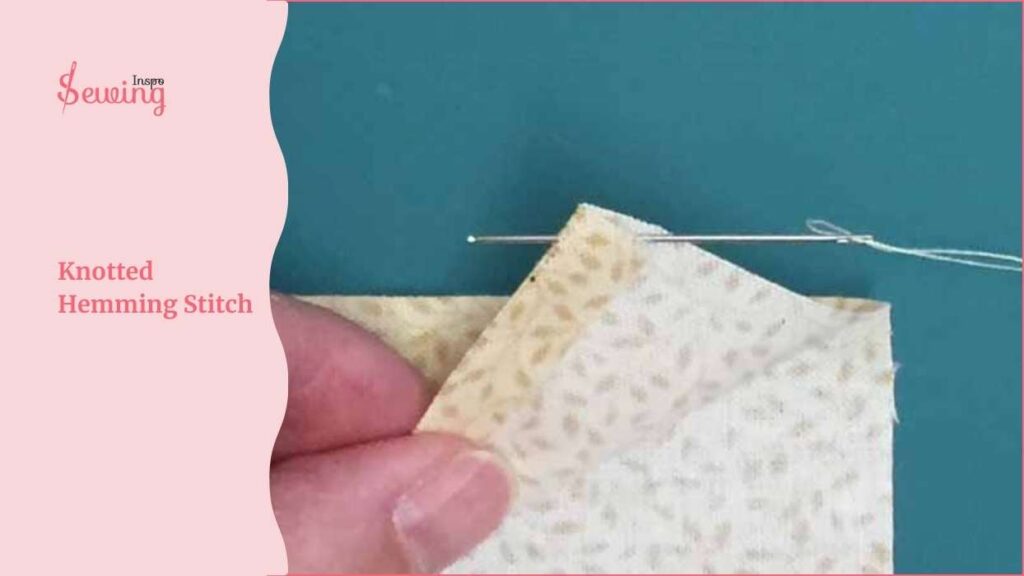

That’s why knotted hemming stitch is used to secure hems in lightweight fabrics with a discreet knotted finish.
If you’re working with lightweight fabrics and want a secure hold without bulky stitching. This helps me to do decorative stitching.
Close Hemming Stitch
The Close Hemming Stitch is a stitch that takes fabric hem with tiny bite, closely spaced stitches.
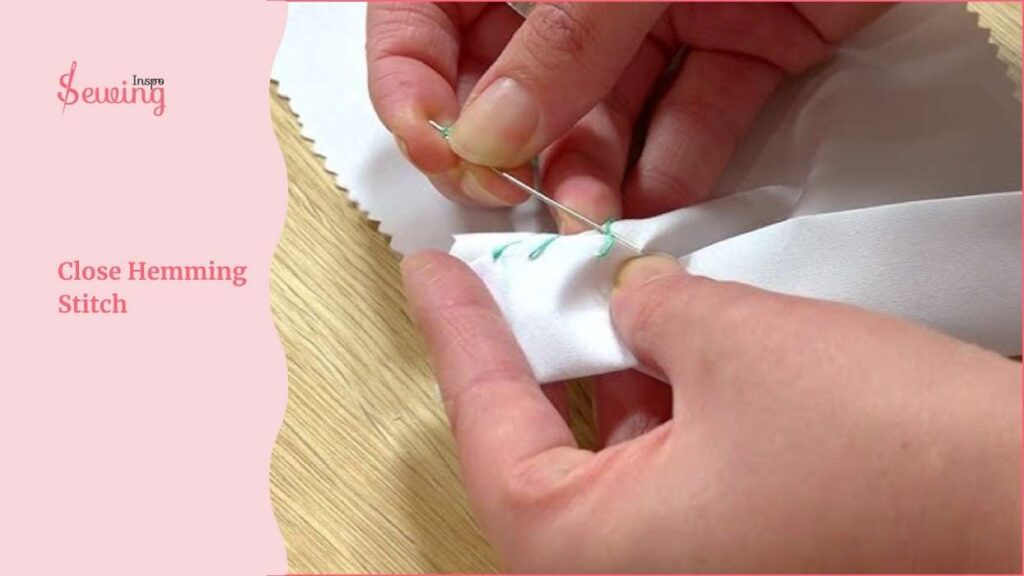
The best part?
It’s nearly invisible from the front. It is perfect when you want a clean, discreet finish. It is a finer, more delicate version of a standard hemming stitch. It’s a great choice for formalwear or any project where you want the hem to stay secure without being seen!
So close, a hemming stitch is used where I need to hand-finish hems that need to be invisible on the front side.

Vertical Hemming Stitch
The Vertical Hemstitch is where the stitches run vertically instead of diagonally along the hem. Unlike traditional hemming stitches, which slant across the fabric. This stitch moves straight up and down. This is one of the common sewing stitches.

And it’s mostly used for hemming stretchy fabrics with a vertical stitch pattern, allowing the fabric to stretch.
In this method, you must pick up just a few threads of the garment before passing behind the folded hem for the next stitch. That’s why the vertical hemming stitch is famous for its hem.
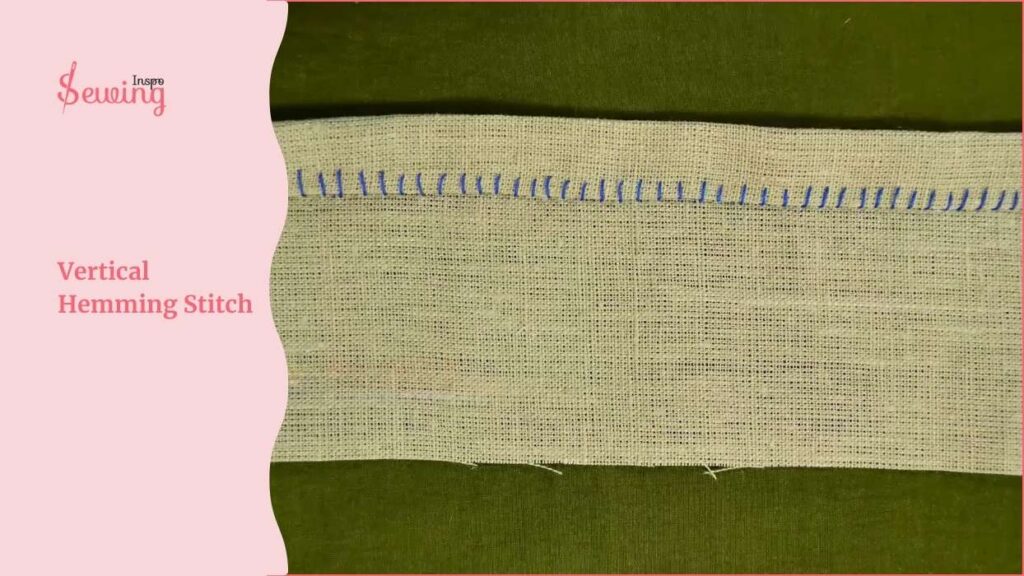
When done neatly with matching thread, it almost disappears into the fabric, giving a clean and polished look. This stitch is especially useful for hemming lined garments, delicate fabrics, or areas where you want minimal stitch visibility.
Slip Hemming Stitch
The Slip Hemming Stitch is a stitch that creates a nearly invisible hem by slipping the needle through just a few threads of the fabric. Instead of making visible stitches, the thread “slips” between the folded hem and the fabric.
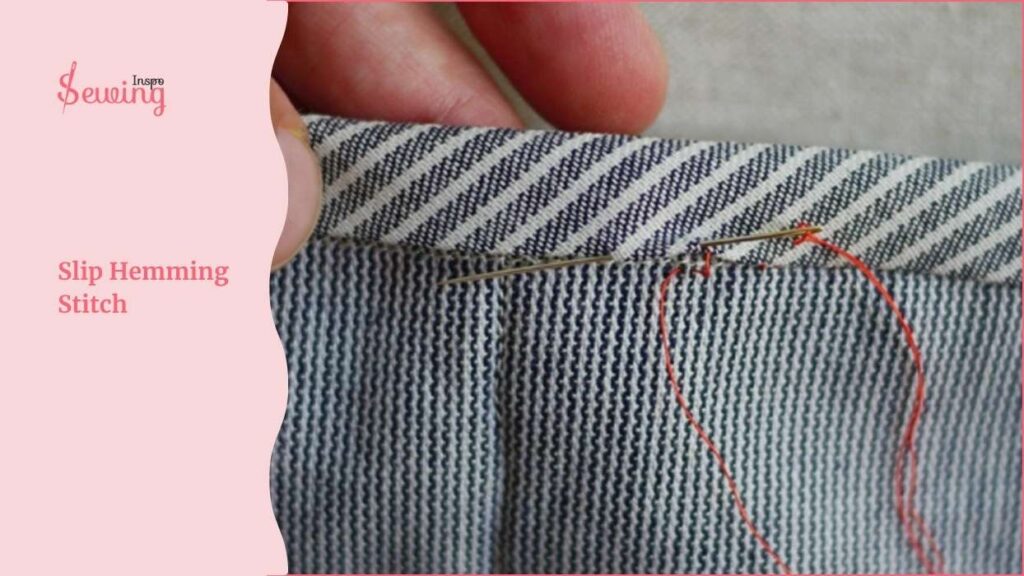
It leaves only tiny, almost undetectable stitches on the front. That’s why slip hem stitch is also called blind hem stitch. This stitch is perfect for delicate fabrics, formalwear, and any project where you want a clean, seamless finish. Some stitchers also call it running stitch hem.
It is mostly used for creating an invisible hem on delicate fabrics, often in hand-sewn hems.

Hand Rolled Hem Stitch
The Hand Rolled Hem Stitch is a stitch that insists on folding the fabric into a traditional hem. The raw edge is rolled between the fingers and stitched in place with tiny, evenly spaced stitches.
This technique is often used for silk scarves, chiffon, handkerchiefs, and other lightweight fabrics where a clean, elegant finish is needed. And if you are looking for What stitch is best for hemming by hand?
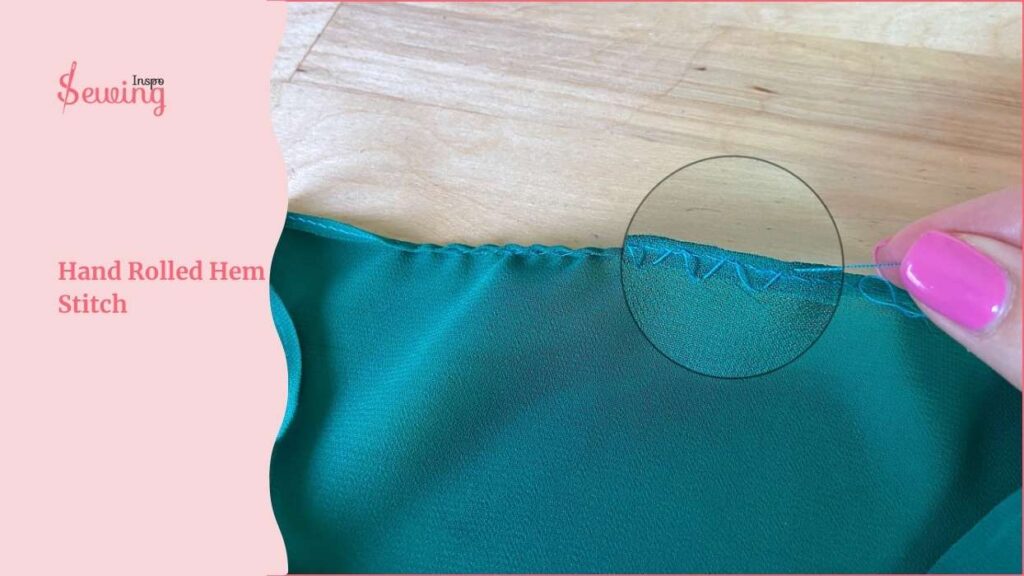
Then the answer would hand rolled hem stitch. Why? Well, because,
- The stitches are so small and close together that they’re almost impossible to see from the front.
- Instead of folding, the fabric is carefully rolled between your fingers before stitching.

That’s why the Hand-Rolled Hem Stitch is used for lightweight fabrics like silk, creating a neat, rolled edge.
Faced Hem Stitch
A faced hem is a hemming technique where a separate piece of fabric, known as a facing, is used to finish the bottom edge of a garment.
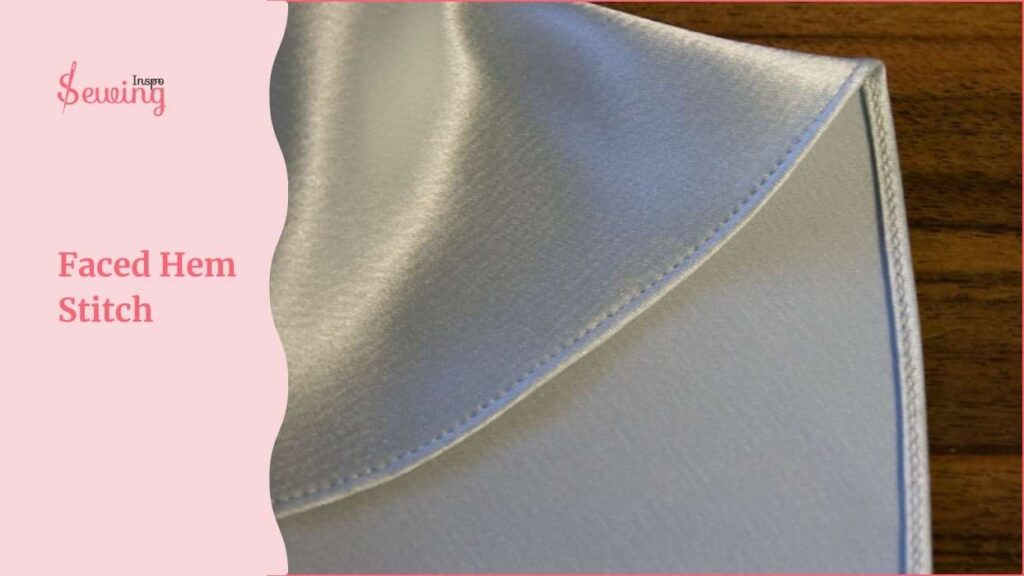
The facing is first sewn to the fabric. Then, it turned up and stitched in place, creating a smooth, structured finish.
So it’s used to finish the inside of a hem with a clean, enclosed edge, often for heavier fabrics.

This method helps reduce bulk and maintain the shape of the hem. It is ideal for curved hems, thick fabrics, and garments that need extra structure. The stitches are usually small and hidden. It gives the hem a clean, professional look.
Bound Hem Stitch
The Bound Hem Stitch is a sewing technique where the raw edge of the fabric is neatly wrapped with bias tape to cover and protect it completely. It is used to enclose the raw edge with fabric binding.

Instead of just folding and stitching the hem, this method “binds” the edge. It’s especially great for curved edges like necklines and armholes, where a regular hem might not sit smoothly. Plus, it adds durability to the fabric.
Depending on the fabric and binding choice. It can blend seamlessly or add a contrast trim for a stylish touch.
You’ll often see it as a thin, neatly stitched edge along the hem, sometimes with a slight ridge where the binding wraps around the fabric.
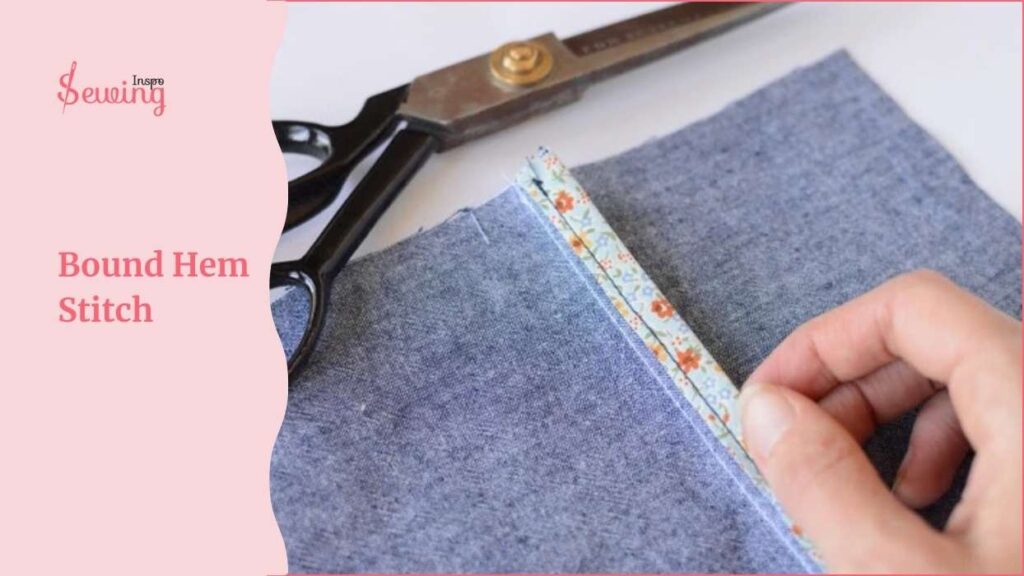
Narrow Hem Stitch
The Narrow Hemstitch is a stitch that creates a tiny, neatly folded hem, usually 1/4 inch or less in width.
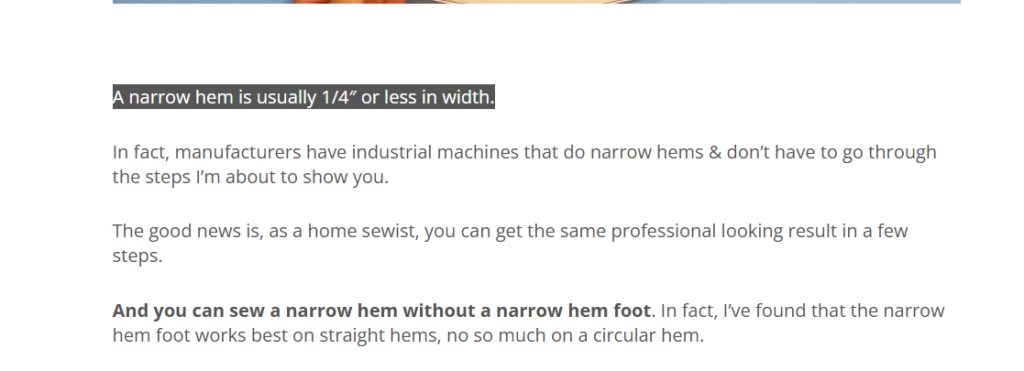

It’s mostly used when I want some narrow effect on the hem of lightweight fabrics like lace or tulle.
It gives fabric edges a clean, refined finish. At the same time, it can be sewn by hand. The edge is usually folded twice into a tiny roll and then stitched down. This is why a narrow hemstitch is also called a Pin Hemstitch.
It creates a clean, almost invisible finish. This stitch is commonly used in scarves, formal dresses, and delicate garments that are sleek.
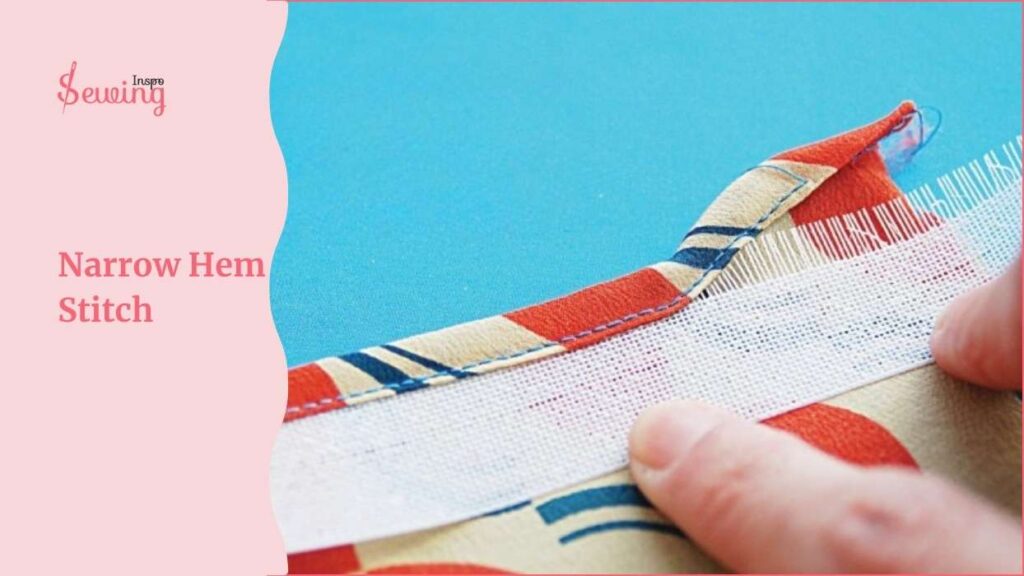
Felled Hemming Stitch
The Felled Hemming Stitch is a stitch that works by passing the needle through the folded edge of the fabric. It creates a strong, nearly invisible seam hidden within the fold.
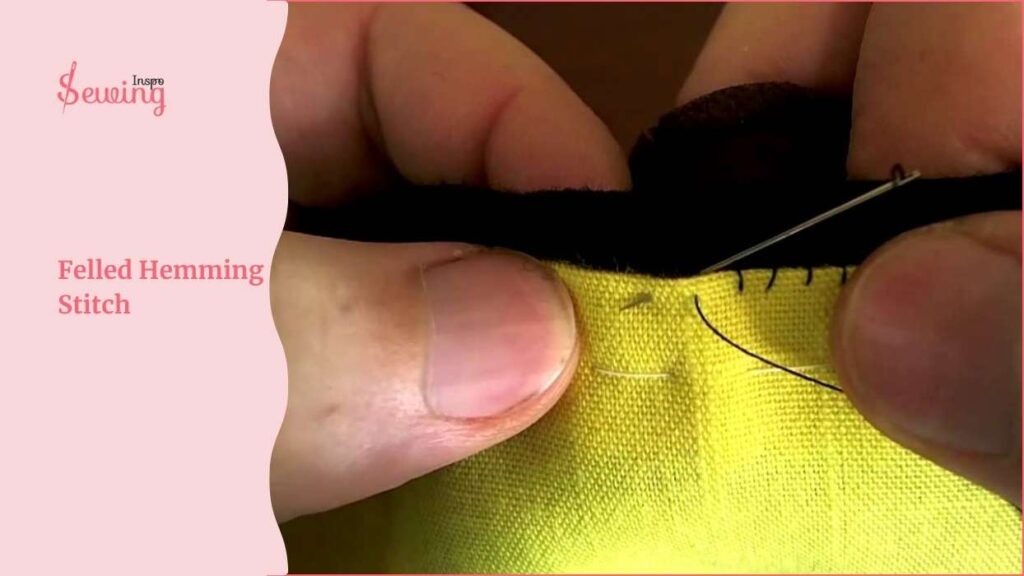
It is mainly used to attach a lining to a hem. It is great that the stitches stay hidden on the outside since the needle doesn’t go through all the fabric layers.
On the inside, though,
You’ll see neat, straight stitches holding everything in place. It’s a subtle but super effective way to get a clean, professional finish without any visible stitching on the garment!

This makes it perfect for hemming garments when you don’t want visible stitches on the outside. That’s why the felled hem stitch is mostly used in jeans pants.
Piped Hem Stitch
A piped hemstitch is a stitch that looks like a pipe around your fabric. This is a stitch where a thin strip of piping fabric is inserted into the hem to create a crisp.
This is the perfect Decorative hem stitch by hand.

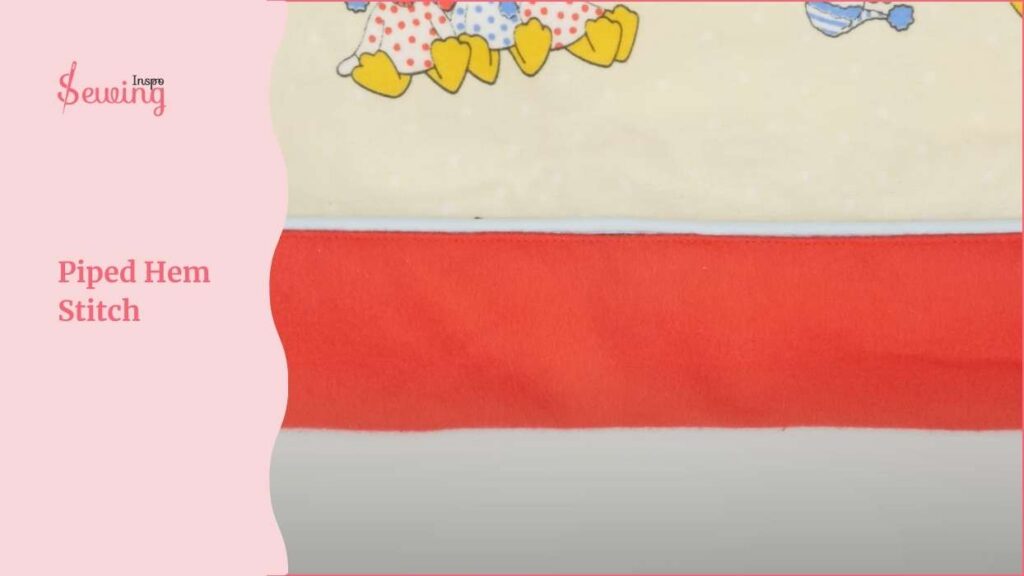
Instead of a plain finish, this method adds subtle yet stylish detail. It gives garments a more refined and structured look.

This hemming stitch adds piping or decorative trim to hems, providing a stylish, raised edge.
This is perfect for dresses, skirts, blouses, and even home décor projects like cushion covers or table linens. It works especially well when you want to highlight the hemline or add a touch of contrast with a different fabric or color.
Double Fold Hemstitch
A double-fold hem stitch is where you fold the fabric edge twice before stitching it down with a stitch.

Double hem stitch is often used for thicker fabrics; it creates a reinforced double fold hem that’s both sturdy and neat.
This hides the raw edge completely. So there’s no fraying, and it gives the hem a clean, polished finish.
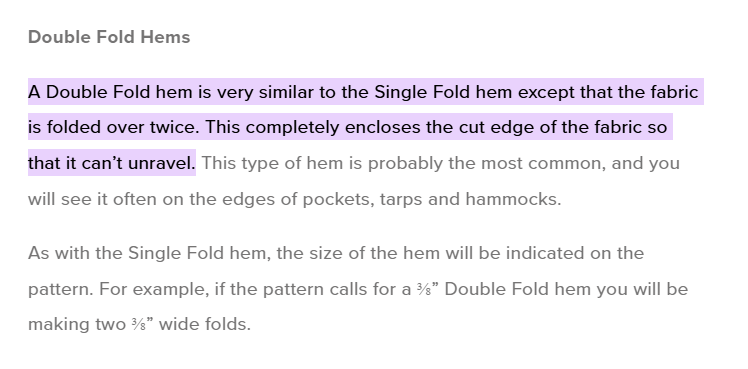
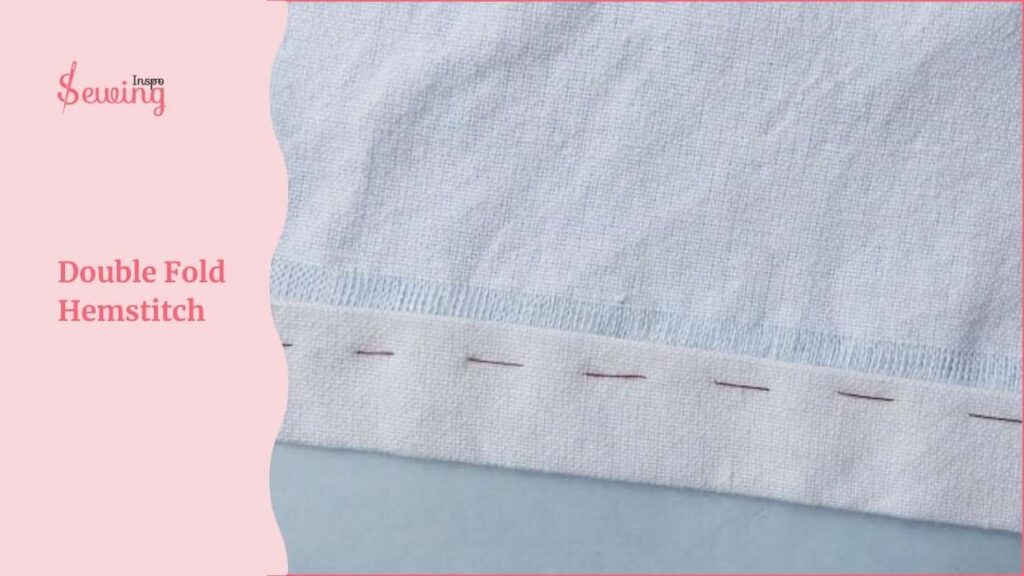
Instead of just one fold, you’re making two small folds, which makes the hem look neater and more durable.
Cuffed Hemming Stitch
A cuffed hem stitch is where, instead of a standard hem, the fabric is doubled over or turned up and then stitched to form a visible cuff.

Typically used in pants or sleeves. Cause it gives a clean, professional finish to cuffs by folding and stitching them neatly.
This method adds weight and durability. Makes it great for pants, sleeves, and skirts where you want a defined, polished look. It’s often used in casual and tailored clothing to give a neat finish while allowing for easy alterations later.
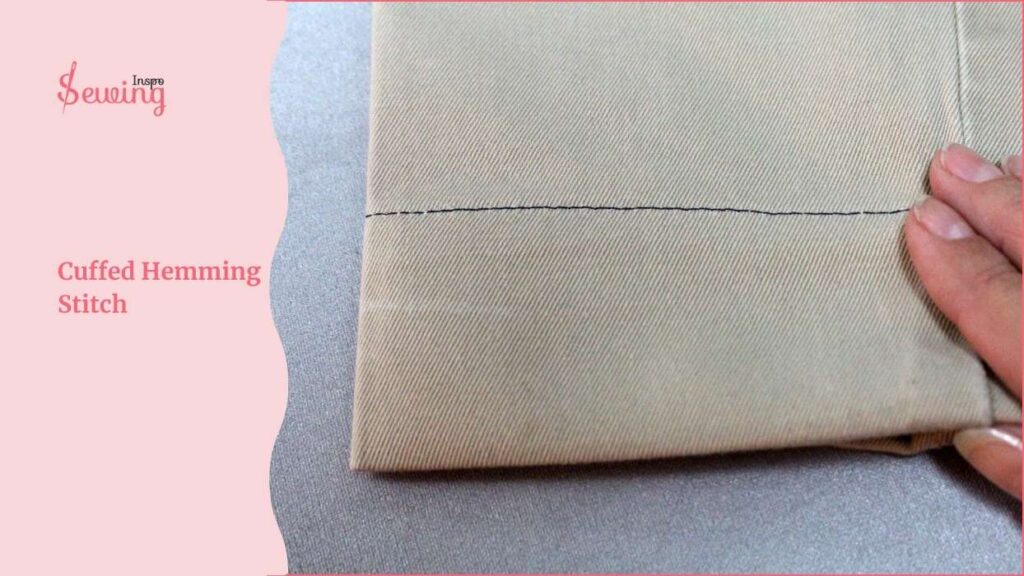
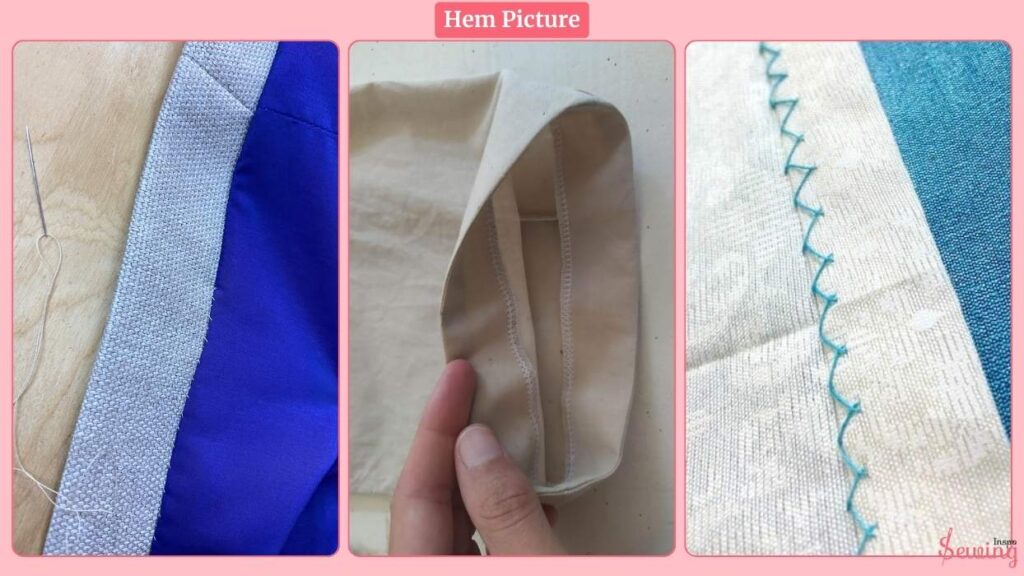
Overall hem picture!
Types Of Hemming Stitches By Hand With Pictures Pdf
Each type of hem has its own place to shine. You just gotta need to use it at the right place. I know it’s easy to forget or get confused about it. So here is the PDF for you.
A Vidual Guide Of All Types Of Hemming Stitches
Knotted Hemming Stitch
Slip Hemming Stitch
Faced Hem Stitch
Narrow Hem Stitch
Cuffed Hemming Stitch
Close Hemming Stitch
Felled Hemming Stitch
Double Fold Hemstitch
Vertical Hemming Stitch
Hand Rolled Hem Stitch
Bound Hem Stitch
Piped Hem Stitch
Best Stitch For Hemming By Hand
That’s all types of hemstitches, but one question about it keeps popping into my mind. Which is, ‘ what is the best stitch for hemstitch among all those?’
After all that research, I didn’t want to bang my head more. So I just called my grandma. She said,
It really depends on what you’re working on. But if I had to pick just one, I’d say the slip hemming stitch is the best choice. Yes, I think slip hem stitch is the best stitch for hemming by hand.
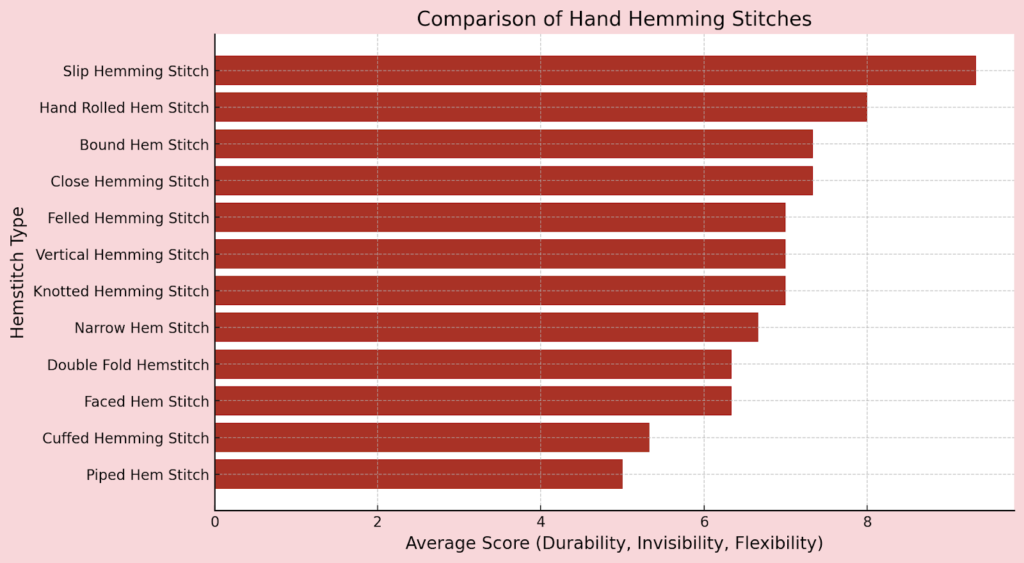
Why slip hem the best hand stitch for hemming??

Well, it’s nearly invisible from the outside, so your hem looks clean and professional.
And the best part?
It works on any fabric, from delicate silks to heavier wools.
Now, don’t get me wrong—
Other stitches have their place. A rolled hem is lovely for lightweight fabrics, a felled hem gives extra strength, and a piped hem adds a fancy touch.
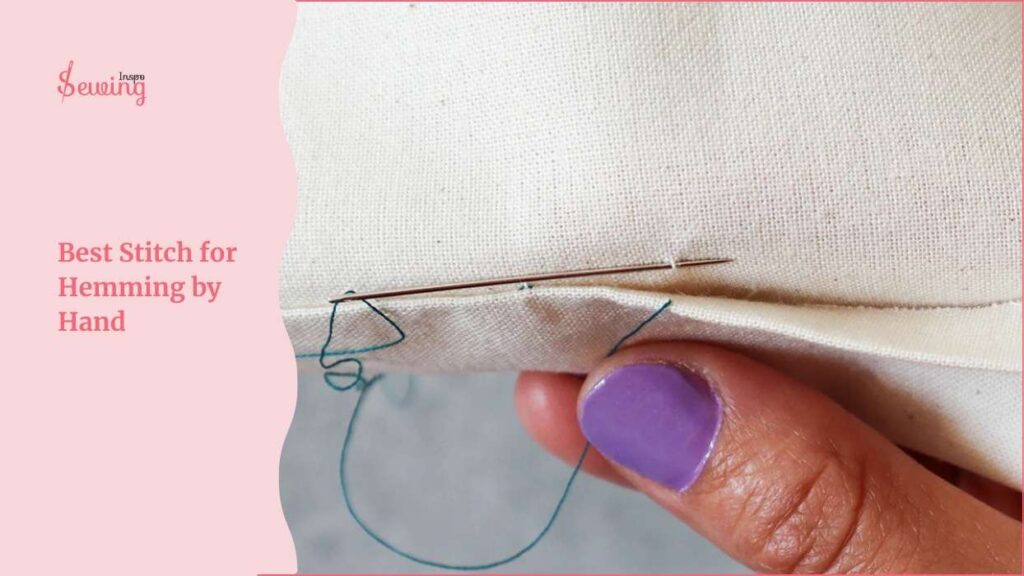
But if you just need a good, reliable stitch for hemming that looks nice and holds up well, go with the slip stitch, my dear. It’s a classic for a reason.
So what’s your best hem stitch? Tell me your favorite one.
Frequently Asked Questions
Which Hemming Stitch Is Best For An Invisible Hem?
The slip hemming stitch is the best choice for an almost invisible finish. It catches just a few fabric threads, making it perfect for dresses, skirts, and formalwear where visible stitches would be distracting.
What’s The Strongest Hand-Sewn Hemming Stitch?
The knotted hemming stitch is one of the strongest because it locks each stitch with a tiny knot, preventing it from coming undone. It’s great for heavy fabrics or areas that need extra reinforcement.
Which Hemming Stitch Works Best For Lightweight Fabrics Like Silk Or Chiffon?
A hand-rolled hem stitch is ideal for lightweight fabrics. It creates a narrow, delicate hem by rolling the fabric edge before stitching, giving it an elegant, high-end finish.
Ending
That’s a wrap on all the different types of hemming stitches by hand! Each hem has its own perfect stitch to match, so picking the right stitch for the right hem makes all the difference.
There’s a hemming stitch, whether you’re going for invisible, decorative, or super secure. So, grab your needle, choose your stitch, and enjoy bringing your sewing project to life!


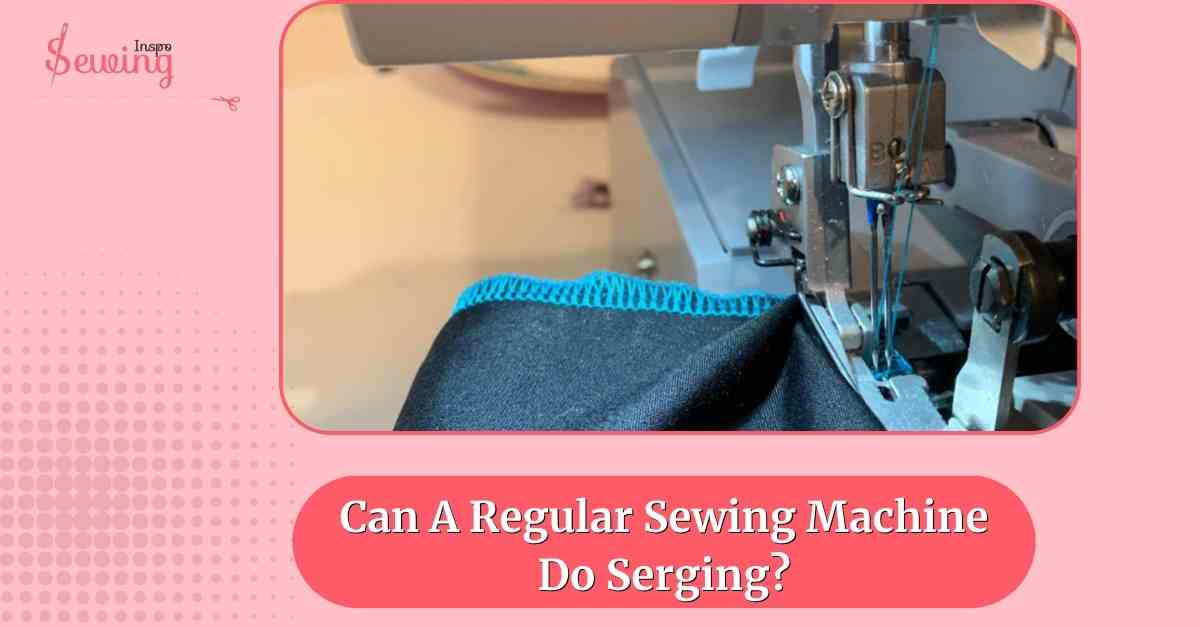
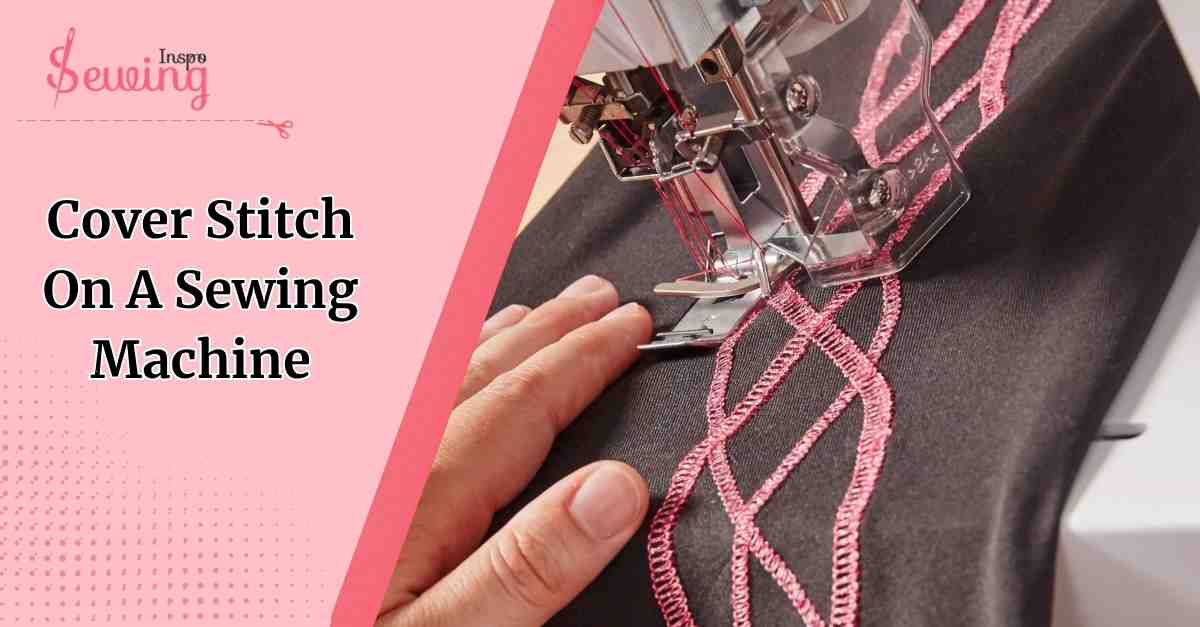
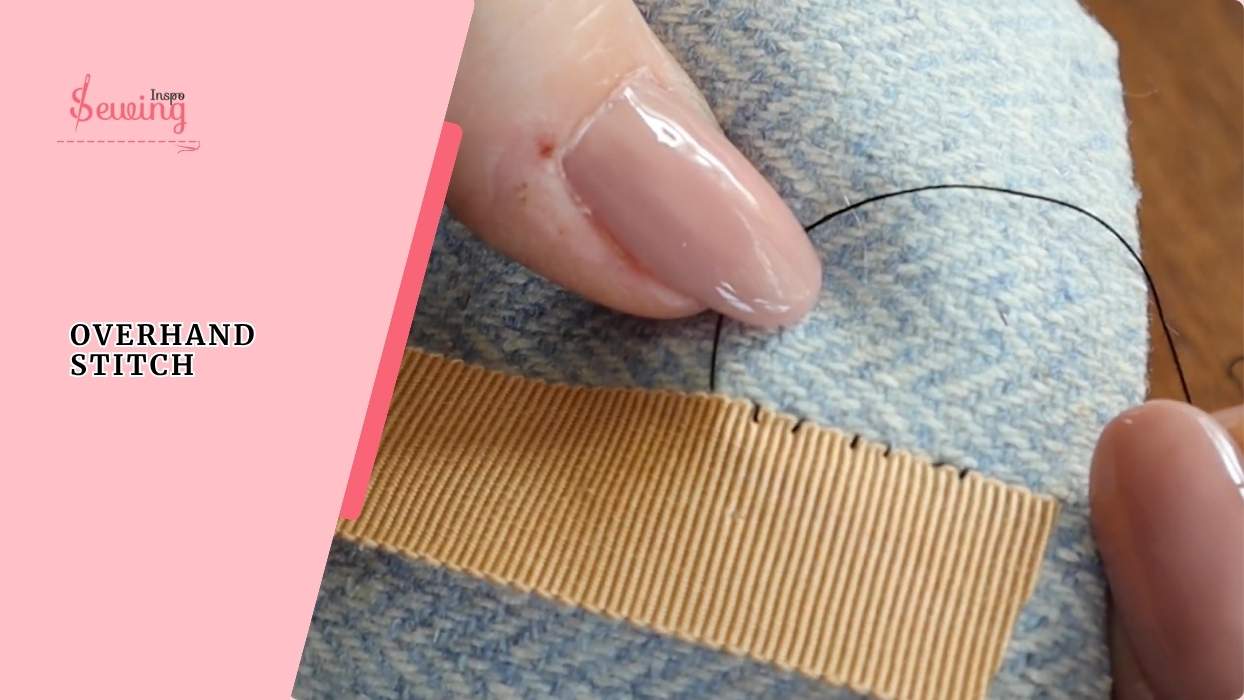
Leave a Reply